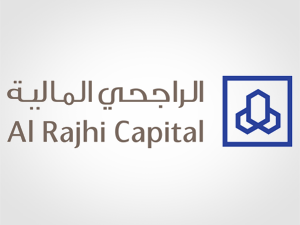Publisher: Maaal International Media Company
License: 465734
In addition to Mortgage updates & Al Rajhi Capital 2022 outlook
Saudi Banks Rate Hikes to Arrive, sooner than Expected –
Post US Federal Reserve officials’ meeting, the market (Bloomberg consensus) is now expecting a 75bps hike, in 2022 and another 75bps in 2023.
At the time of our last report (Oct 27, 2021), the consensus expectation was only one 25bps hike in 2022 and 75bps in 2023.
The sooner than expected hikes ensure that we will see a faster improvement in earnings especially for the corporate banks as their loans reprice faster. Overall, the full effect of the 150bps hike could be a 15% increase spread over 3 years given the phased transmission as per our analysis.
اقرأ المزيد
However, the narrative could change as and when inflation cools down and the rate hike expectations could be lowered again.
Thus, tactical bets on this theme may be preferred than factoring in the full rate hikes into 2022/23. Currently, as per our estimates, NIMs could increase by 40bps over 3 years assuming 75bps hikes in 2022 and 2023. Another year for mortgages in 2022:
The average monthly run rate of mortgage disbursements till October in 2021 has been SR12.2bln (SR11.3bln for FY20).
We expect a monthly run rate of c.SR7.5bln (21% y/y growth – unchanged from our last estimate) and c.SR6.5bln for FY22 and FY23 respectively, but expect the first half to see a higher pace of disbursements. Increasing regulatory interest in mortgage concentration: Today mortgages are 13% of total banking assets.
Taken as a % of loans, it jumps to c.21%, which SAMA believes is healthy.
Based on our current growth estimates, this could increase to 25% by 2025.
While this is no critical reason for worry, at the current growth rates, individual exposure of certain banks could be much higher.
Thus, we sense that there may be regulatory interest in monitoring the concentration of mortgages going forward.
Increase in refinancing: If banks are mandated by the regulator to restrict additional exposure to mortgages there could be significant refinancing by some banks to lower the exposure which would in turn increase inter-bank activities.
We believe the portfolio of Saudi Refinancing company and securitizations are likely to increase significantly over the years.
Sukuk issuances to rise: At the moment, two banks have a disproportionate share of total deposits, 52% of the total KSA banking system deposits.
The rest of the banks have to raise deposits by incentivizing higher rates for deposits.
But many banks have reached LDRs of 90%. (By SAMA definition, the average LDR is much lower, but for practical purposes, we are using plain LDRs).
This also builds a case for increase in bonds/Sukuks issued.
This would also partially address the issue of duration mismatch.
Budget surplus in 2022: The Saudi budget for FY22 was recently revised and is now expected to be in surplus by SAR90bln – the first in a decade.
This implies that Govt. bond issuances may be now for repayment only and there may not be any net increase in Govt. debt. This means that the existing SR560bln of Govt borrowings (16% of total bank assets), quite low back in 2014 and that grew rapidly in the past 5 years, will not grow but remain stable. We believe this is going to be partly substituted by a significant increase in bank Sukuks/securitization.
Related








